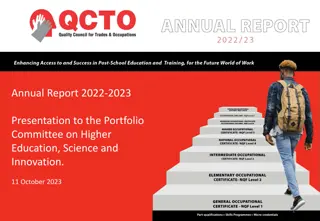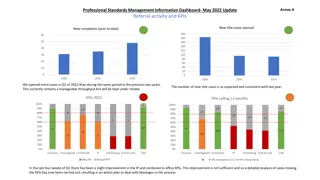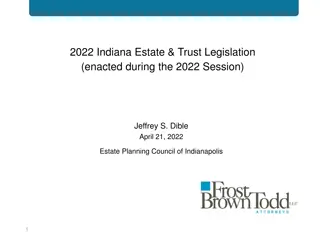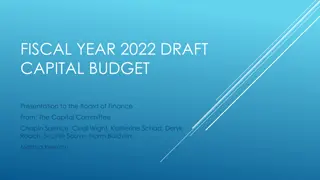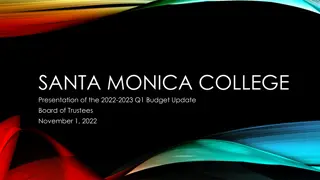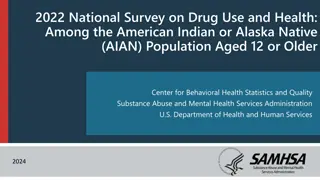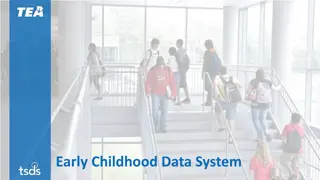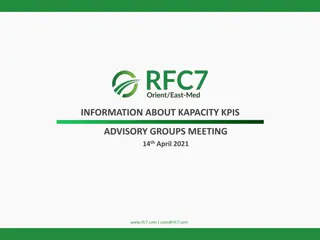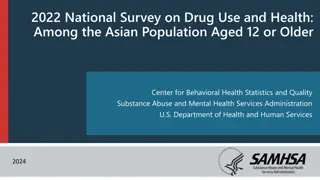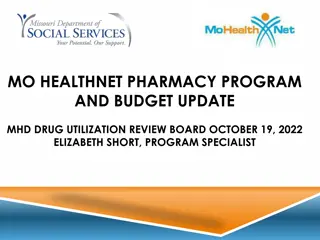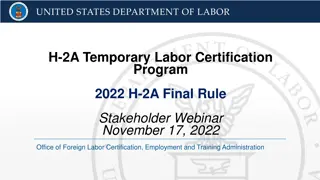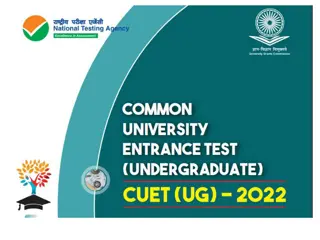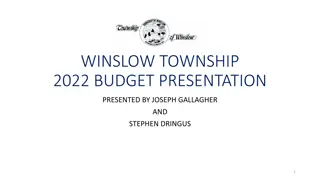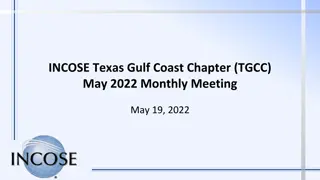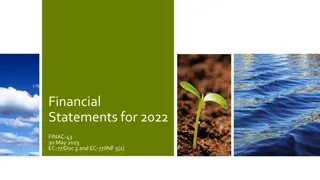
Effective Waste Management Practices for Environmental Sustainability
Dr. Yashpal Singh discusses sustainable waste management techniques, focusing on controlled land application and the challenges faced in using distillery spent wash in agriculture. The Ministry denies regulatory permission due to potential soil and water contamination issues. However, there is a call for reconsideration based on scientific evidence supporting the bio-composting method. Additionally, the OTCLA method of disposing of bio-methanated spent wash is highlighted, emphasizing its benefits and established protocols for safe implementation.
Download Presentation

Please find below an Image/Link to download the presentation.
The content on the website is provided AS IS for your information and personal use only. It may not be sold, licensed, or shared on other websites without obtaining consent from the author. If you encounter any issues during the download, it is possible that the publisher has removed the file from their server.
You are allowed to download the files provided on this website for personal or commercial use, subject to the condition that they are used lawfully. All files are the property of their respective owners.
The content on the website is provided AS IS for your information and personal use only. It may not be sold, licensed, or shared on other websites without obtaining consent from the author.
E N D
Presentation Transcript
Sustainable Waste Management - One Time Controlled Land Application by: Dr. Yashpal Singh Chairman The Wealthy Waste School India Former, Director, Environment, U.P. and Member, Expert Appraisal Committee, Govt. India
Ministry Denies Regulatory Permission Ministry has denied regulatory permission to use Distillery Spent Wash in Agriculture. Observed that high TDS and E.C. in spent wash prevents uptake of water by plants. Adversely affects the Soil quality and plant growth Very difficult and impracticable to implement as per existing protocol. Past experience in terms of ground water/ surface water/ soil contamination not good. Court Litigation and remediation project also confirms the possibility of ground water contamination. Bio Composting is allowed. Any sort of land application of spent wash and salt load in liquid form shall not be considered.
A need to request the Ministry for a Reconsideration Based on extensive evidences to the contrary. A reconsideration. need to request the Ministry for a Enormous Scientific Evidence. Advantages in Environmental Sustainability Global and National Acceptance A proven CREP alternative Accepted by judiciary
OTCLA an established method of disposal of Bio methanated Spent Wash. Practiced by CPCB for many years and across the Globe. May 2008 resolution does not give any technical reasons but says it is difficult to Manage. Do not close road if people walk on wrong side. Still being permitted in some states. Involves filling in Post harvest fields, allowing it to dry for 15 to 20 days after which the fields are tilled and sown. Subsequent irrigation is given with fresh water. One cm in a 1 hectare field could yield 600 Kg Potash, 360 Kg Calcium, 100 Kg Sulphates, 28 Kgs Nitrogen and 2 Kg Phosphates. Less than 300 M3/ha. No adverse affect in soils. CPCB has a protocol based on practices across the world and through field and experimental studies by IARI Delhi, Tamil Nadu Agricultural University Coimbatore.
The Protocol establishes. BOD and pH limits. o System of Sampling, monitoring and evaluation. o Storage during periods of no utilization. o Transportation guidelines. o Land availability. o Crop wise dose requirement. o CPCB also recognized pre-sown land application as an emerging technology. In connection to E.C. and TDS. No apprehensions have been made in existing studies. Matter was earlier of concern in the protocol and safeguards introduced. Recommends short term and long term monitoring of E.C. to ensure that the E.C. does not exceed 4 milli. Mhos./cm in an extract of 2 parts of soil with 5 parts of water. o
o Maintaining TDS in ground water so as not to exceed 10 mg/L over initial results. o Also provides a MOU with nearby agricultural university for monitoring of required doses of spent wash, monitoring of soil, ground water and crop productivity. Studies have indicated that there is no adverse impact on soil reaction or electrical conductivity. OTCLA could save at least 50% of basal NPK application with significantly higher cane yields of main crop and two subsequent ratoons. Some studies indicate that application, 40 to 60 days before planting would give sufficient time for natural oadation of organic matter and solve the problems of BOD/COD and E.C. Practiced widely in Brazil, Cuba, Mexico, Australia, Philippines and Japan as a very sustainable technology.
Substitutes for chemical fertilizers, saving on costs and pollution due to fertilizer run offs. Incineration and concentration burn and decompose the vital elements and make no contributions to sustainable farming. OTCLA has tremendous financial advantages. 500 Crores NPK. o 150 Crores Micronutrients and organics. o 100 Crores savings in environmental costs o 100 Crores in loss of fisheries. o 500 Crores savings in treatment costs o 100 Crores in public health o 100 Crores in landscape costs. o 1400 Crores Energy savings due to existing treatment systems. o
CPCB affidavit in NGT says concentration has High CAPEX and OPEX. o Evaporation costs are very high. o Highly energy intensive (20-40 KWH/M3) o High Carbon Footprint o Issues in Reject Management. Alcohol costlier by 8 to 10 Rs./Litter Draft co-processing guidelines. CPCB has admitted that Concentration and Incineration is also being practiced but it is not found technically and economically feasible. This has not been held for OTCLA. Concentration and Incineration also water intensive. CPCB report of 2011 states that controlled land application appears to be one of the viable technologies if scientifically practiced. Sufficient safeguards taken in the Protocol.
Office of the Principal Scientific Advisor to Government of India in Opportunities for Green Chemistry Initiatives: Molasses based Distilleries, 2014 supports OTCLA. Beneficial for sodic soils because of high Ca and Mg and capacity to replace Na which can leach out. o OTCLA can leach out soluble salts from surface for better germination and growth of crop. o Application rate should be decided on the K content in the effluents and the K requirement of crop and soil type. o Does not involve continuous application as irrigation mater used as manure. o PSA suggests long term comprehensive research project and collection of global experience for presentation before the authorities.
PSA says that BMSW is rich is potash and nutrients and wasting the BMSW is not desirable since the country depends on import of potash. He also comments that recovery of potash from spent wash by evaporation and incineration would not be viable. Ash disposal is a problem. Concentration and Incineration also need a detailed evaluation. Pre-sown land application is beneficial to crops and highly sustainable without any detriment to soil. OTCLA creates o Organic fertilization of fields o Reduces the pH o Increases availability of nutrients o Increases capability to retain water.
Improves the physical structure of the soil. o Increases the ammonification, nullification and enzyme activity. Augments N availability. o Decolorizes effluents due to microbial and photo degradation. o Has growth promoting and insecticidal properties. o BMSW has lower C:N ratio facilitates faster degradation as compared to untreated spent wash. o Sodic Land reclamation. Spent wash can replace gypsum, iron pyrites, sulphur and Ferrous Sulphate currently used. o Improves hydraulic conductivity, soil permeability o Reduces bulk density. o Increased N, P, K, S, Zn, Cu, Fe and Mn in spent wash amended soils. o Converts unavailable native soil nutrients into available nutrients particularly P o
Assists the rapid build up of soil micro organisms and consequently increase the acidity of many enzymes. Australia. o Blended with additional crop nutrients and sold as manure. o Spent wash used to compost trash in fields o Fields generally sprayed with spent wash to facilitate accelerated composting. o Land application prescribed as one of the most efficient methods. o Application rates are controlled to avoid anaerobic conditions. o Guidelines prescribed. o Bio Dunder a valuable potassium rich fertilizer. o Liquid one shot.
Brazil Aspirator guns draw spent wash from Lorries and spray it in a radins of 200 feet o Reduced consumption of fertilizers as compared to other countries. o Brazil has a technical standard. o Mills have applied spent wash in over 70% of their crop areas. o Mexico Ferti-irrigation program. 35% federal, 15% state and 50% Benefisaring. o Increase yields and better use of water achieved. o Achieves water savings of 40%, energy reduction of 32%, increase in harvested area by 18% and increase in yield by 30%. I.R.R. to farmers was 16%. o
Romania o Spent wash to permanent grasslands 4 to 7 tonnes/ha in 1:5 water dilution increased yield by 50 to 81% over the control. Ireland o Slops concentrated to form pot ale used in Agriculture. Japan India Bio stimulant FCO and Irrigation. Simbhaoli Judgemnet-16/10/2014. Any technology can be used. Ganga Judgment-No ZLD/OCEMS across the Board. Ministry says they are difficult to implement. Non compliance should be dealt severely. No scientific inadequacies found.
Join in filing representation Allow OTCLA. o Allow Sodic Land Reclamation o Allow Bio-stimulant o Study be conducted if required. o Intervene with the fertilizer department and seek their help. o Form a committee to take this forward. o
THANK YOU THANK YOU

